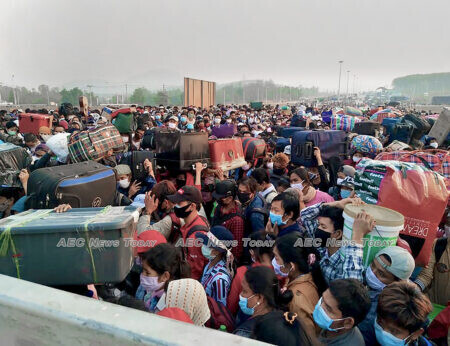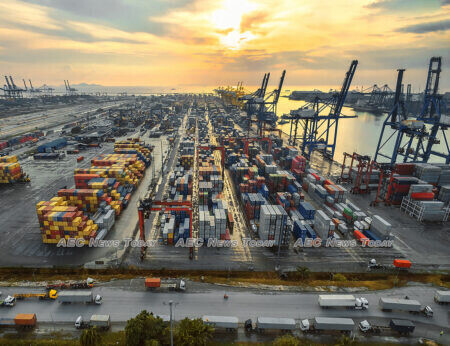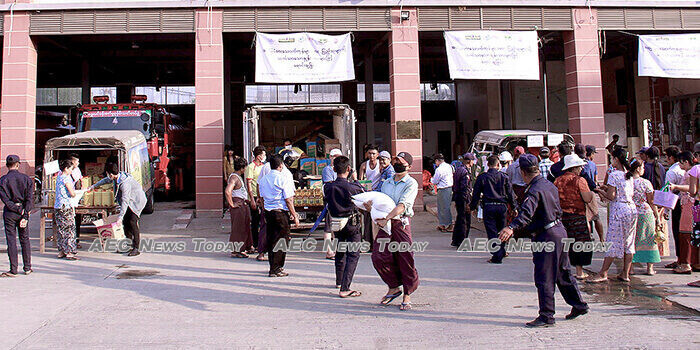On July 1 2020, the European Union (EU) and six of its member governments announced a moratorium on debt repayments due from Myanmar. The agreement allows Myanmar to ‘focus efforts on economic recovery from COVID-19’ and is worth almost $100 million — 20 per cent of Myanmar’s current debt payments schedule.

Widely reported in the Myanmar press, the gesture is boosting a relationship sorely tested over the atrocities in Rakhine State and elsewhere, and the possibility that EU trade privileges — vital to Myanmar’s fast-growing garment sector — could be withdrawn.
The public health impact of COVID-19 on Myanmar has been far milder than predicted. Infection and mortality rates are low, and more or less in line with the country’s peers in Southeast Asia.
Despite early estimates that Myanmar could suffer two million deaths and 10 times as many infected, by mid-July the country had recorded just six deaths, 341 total confirmed cases and 278 recovered cases.
Given the state of Myanmar’s health administration, these numbers almost certainly understate the true situation. Still, such under-counting is not likely to be of great magnitude. Enquiries by the author with various hospital and health officials (and funeral associations) reveal that Myanmar truly does seem to have escaped the worst of the pandemic so far.
But if the health impact of COVID-19 on Myanmar has been relatively mild, the same cannot be said for the economic damage. Exports, commodity prices, remittances, and tourist arrivals were the first to be affected, followed quickly by just about all other sectors of the economy as the government implemented various strict (if necessary) containment measures.
5 mln jobs gone

Once predicted to be the second-fastest growing economy in Asia with GDP growth of 6.7 per cent expected in 2020, Myanmar’s economic growth will fall now to just 0.5 per cent.
Any comfort from the notion that this is still a positive number is tempered both by the high degree of uncertainty over such estimates, and by the sheer size of the growth reversal.
Non-farm employment is taking a significant hit, with up to 5 million jobs lost. Many of these losses were in the formal economy, with a sizeable number from the critical garment sector.
Surveys of small and medium-sized enterprises (SMEs) suggest around half fear their survival is at risk.
Against the economic damage of COVID-19, Myanmar’s government is moving with (perhaps surprising) speed and policy coherence.
It enacted an array of relief measures centred around the $2.2 billion ‘COVID-19 Economic Relief Plan’ (CERP), the product of key economic reformers within the Ministry of Planning, Finance and Industry (MOPFI) and approved by the new Project Bank facility.
Monetary and financial initiatives will include reductions in interest rates, debt rescheduling, new lending programs for SMEs and farmers, prudential requirement forbearance on banks, and credit guarantees. The plan will also dramatically increase health expenditure, food and cash transfers to the most vulnerable, village-based employment programmes, and accelerate various infrastructure schemes.
Government services going online
Among the more innovative plans is to further stimulate Myanmar’s digital economy — which is already fuelled by high mobile-phone penetration rates — by moving as many government services as possible online. Despite some implementation problems with the CERP, it seems to have been effective in countering what otherwise may have been a near collapse in aggregate demand.

Financing these recovery measures is challenging. The current government has been extraordinarily successful in repairing Myanmar’s public finances, meaning much of the spending is enabled simply through increased budget allocations.
Assisted by government bond and bill markets that are proving surprisingly resilient, modest recourse to central bank funding (while remaining true to the government’s strict timetable on ultimately eliminating such financing) is also smoothing the way.
In addition to the debt relief from the EU, other sources of international assistance are also playing a role in Myanmar’s recovery financing.
Under the Debt Service Suspension Initiative (DSSI) supported by the G20 and Paris Club of creditor nations, Myanmar has been provided with ‘extra’ financial resources amounting to around $1.2 billion.
Myanmar also accessed $357 million through the International Monetary Fund’s (IMFs) Rapid Credit Facility (CF) — an amount representing 50 per cent of the country’s IMF quota, leaving a further $357 million still available for drawdown.
Interestingly — both for this moment and the longer-term relationship — China has offered Myanmar little assistance during COVID-19, even as it has applied pressure for approval of various Belt and Road Initiative (BRI) projects.
By far Myanmar’s largest creditor, to date China has been singularly unresponsive to the needs of a country it so often portrays as its ‘little brother’.
This article was written by Sean Turnell, an Associate Professor at the Department of Economics, Macquarie University. He is also a special economic consultant to the State Counsellor of Myanmar and Director of Research of the Myanmar Development Institute (MDI). It first appeared on East Asia Forum under a Creative Commons License and is reproduced here with its permission.
Feature photo UMFCCI
Related:
- IMF approves $356 million support for Myanmar (ASEAN Economist)
- What to Make of China’s Debt Relief Announcement (The Diplomat)
- EU States Suspend US$100 M of Myanmar’s Debt Payments During COVID-19 (The Irrawaddy)
East Asia Forum
It consists of an online publication and a quarterly magazine, East Asia Forum Quarterly, which aim to provide clear and original analysis from the leading minds in the region and beyond.
Latest posts by East Asia Forum (see all)
- China’s South China Sea bullying seeing increased blowback from Asean claimants – February 2, 2022
- Illusionary, delusionary or visionary? Cambodia tests living with COVID-19 – December 6, 2021
- Prioritising a Philippine–EU FTA is vital for post-pandemic recovery – July 26, 2020
- Time for Asean to stand up for itself in the South China Sea – July 25, 2020


